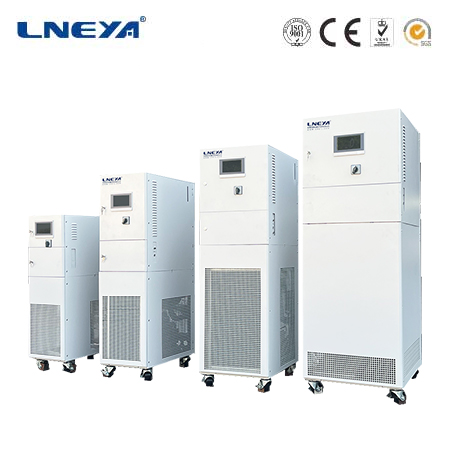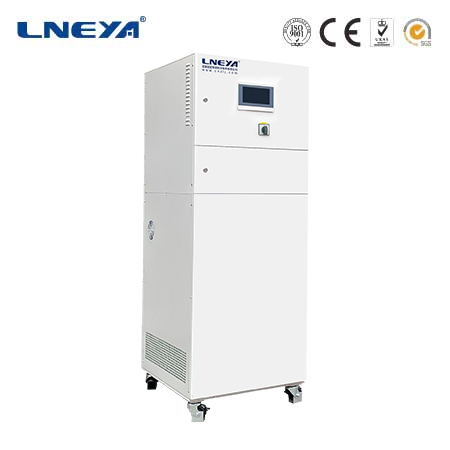chiller temperature range
Chiller Temperature Range
Chillers are essential cooling devices used across various industries, and their temperature range is a critical parameter that determines their suitability for different applications. The temperature range of a chiller can vary widely depending on several factors, including its type, the refrigerant employed, and the specific requirements of the process or environment it serves.

Factors Influencing Chiller Temperature Range
Type of Chiller: Different types of chillers are designed to operate within specific temperature ranges. For example, air – cooled and water – cooled chillers, which are commonly used for general cooling purposes in commercial and industrial settings, typically have different temperature capabilities. Air – cooled chillers may have limitations in extremely low – temperature applications due to the ambient air temperature affecting heat dissipation, while water – cooled chillers can often achieve more consistent cooling and may be suitable for a broader range of temperatures depending on the water source and cooling tower performance.
Refrigerant: The choice of refrigerant plays a significant role in determining the temperature range of a chiller. Refrigerants have different boiling points and phase – change characteristics. For instance, refrigerants like R – 134a are commonly used in medium – temperature applications, while substances such as liquid nitrogen are used for achieving extremely low temperatures in cryogenic chillers. Each refrigerant has an optimal temperature range within which it operates most efficiently, and this directly impacts the overall temperature range of the chiller system.
Application Requirements: The specific needs of the application dictate the desired temperature range of the chiller. In an industrial manufacturing process, such as plastic injection molding, the chiller may need to maintain a relatively low temperature to cool the molds and ensure proper solidification of the plastic. On the other hand, in a commercial building’s air – conditioning system, the chiller is designed to cool the air to a comfortable temperature range for occupants, which is typically higher than that required for industrial processes.
Temperature Ranges of Different Chiller Types
Industrial Chillers
Low – Temperature Industrial Chillers: These chillers are designed for applications that require extremely low temperatures. They can typically achieve temperatures as low as -40°C or even lower in some specialized cases. They are commonly used in industries such as pharmaceuticals for the production of certain drugs that require low – temperature processing, and in the food industry for blast freezing of food products. The low – temperature range is achieved through the use of specialized refrigerants and advanced cooling technologies.
Medium – Temperature Industrial Chillers: Medium – temperature industrial chillers usually operate within a range of -10°C to 15°C. They are widely employed in processes like metalworking, where they cool cutting tools and lubricants to prevent overheating and ensure the quality of the machining operations. In the chemical industry, these chillers are used to control the temperature of chemical reactions, maintaining the reaction mixture at an optimal temperature for efficient production.
High – Temperature Industrial Chillers: High – temperature industrial chillers can maintain temperatures in the range of 15°C to 30°C. These are suitable for applications where a moderate level of cooling is required, such as in some textile manufacturing processes to cool machinery and prevent heat – related damage to the equipment.
Commercial Chillers

Air – Conditioning Chillers: In commercial buildings, air – conditioning chillers are used to cool the air to a comfortable temperature for occupants. The typical temperature range for these chillers is between 5°C and 15°C. The chilled water produced by the chiller is circulated through the building’s air – handling units, where it cools the air before it is distributed to the various rooms. This temperature range ensures that the indoor environment remains pleasant while also being energy – efficient.
Food Storage and Processing Chillers: For food storage and processing facilities, chillers need to maintain specific temperature ranges to preserve the quality and safety of the food products. Walk – in coolers, which are a type of commercial chiller, usually operate between 0°C and 10°C, ideal for storing fresh produce, dairy products, and many types of meat. Freezers, on the other hand, can reach temperatures as low as -20°C to -30°C, suitable for long – term storage of frozen foods.
Laboratory Chillers
General – Purpose Laboratory Chillers: These are used for a variety of laboratory applications where moderate cooling is required, such as cooling of laboratory equipment like centrifuges and spectrophotometers. They typically have a temperature range of -5°C to 20°C, allowing for the precise control of temperature to ensure accurate experimental results.
Cryogenic Laboratory Chillers: Cryogenic chillers are capable of achieving extremely low temperatures, often down to -150°C or lower. They are essential in laboratories for experiments involving cryogenic materials, such as superconductivity research, and for the ultra – cold storage of biological samples like stem cells and genetic materials. The low temperatures are achieved using cryogenic refrigerants and sophisticated cooling systems.
Importance of Selecting the Right Temperature Range
Selecting a chiller with the appropriate temperature range is crucial for several reasons. Firstly, using a chiller outside of its recommended temperature range can lead to reduced efficiency, increased energy consumption, and potential damage to the chiller components. For example, operating an air – cooled chiller in an extremely low – temperature environment may cause the refrigerant to condense too slowly, resulting in poor cooling performance and increased wear on the compressor.

Secondly, the wrong temperature range can compromise the quality and safety of the process or product being cooled. In the food industry, if the chiller temperature is not maintained within the proper range, food products may spoil, leading to waste and potential health risks. In industrial manufacturing, incorrect chiller temperature can affect the quality of the final product, leading to defects and increased production costs.
In conclusion, the chiller temperature range is a complex and important aspect of chiller operation. It is influenced by multiple factors, and different types of chillers are designed to serve specific temperature – related needs in various industries. By understanding these temperature ranges and carefully considering the application requirements, users can select the most suitable chiller, ensuring optimal performance, energy efficiency, and the successful operation of their processes or systems.
Related recommendations
nitrogen heating system
250Introduction to Nitrogen Heating SystemA nitrogen heating system is a thermal management solution that employs nitrogen, an inert gas, as the medium for heat transfer. Nitrogen's inert nature mak...
View detailswater cooled chiller system
661Water-Cooled Chiller Systems: Efficiency and Versatility in Cooling Solutions Introduction to Water-Cooled Chiller Systems Water-cooled chiller systems are a type of industrial cooling solut...
View detailssmall water cooled chiller
691Key Features of Small Water-Cooled Chillers Compact Design: The compact size of small water-cooled chillers allows for easy installation in confined spaces and facilitates integration into exis...
View detailswater chiller for injection molding machine
407water chillers play a critical role in the cooling process of molds, which is essential for the solidification of injected molten plastic. The efficiency of the chiller directly impacts the qualit...
View details
 LNEYA Thermal Test Chillers
LNEYA Thermal Test Chillers






HelloPlease log in